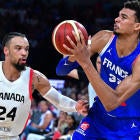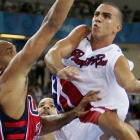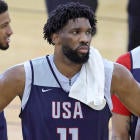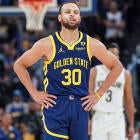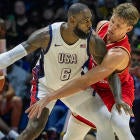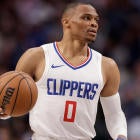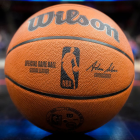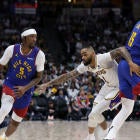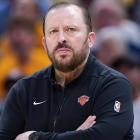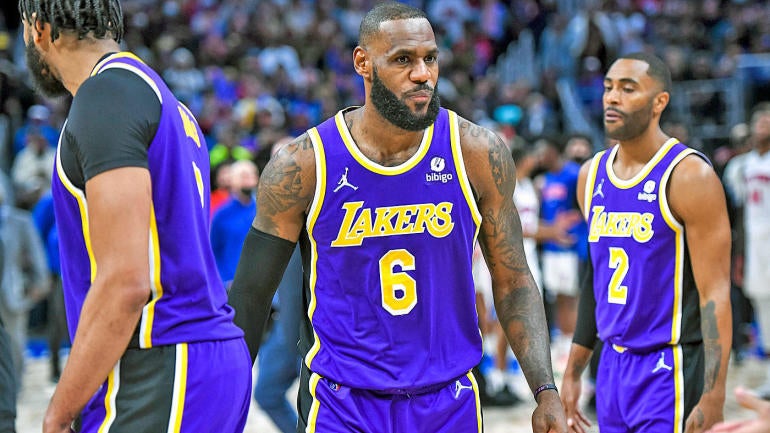
There was something fitting about Frank Vogel's last stand coming in Indiana. His Lakers arrived at the site of many of his greatest defensive triumphs ranked 20th on that end of the floor, but the persistent coach stuck with DeAndre Jordan and Avery Bradley—two replacement-level players by most metrics—in his starting lineup. That approach had the Lakers trailing for most of the night. Down seven in the fourth quarter and facing the prospect of a 1-4 road trip, Vogel finally relented.
To that point in the season, he had played only eight minutes without one of Jordan, Dwight Howard or Anthony Davis on the floor. The Lakers spent most of the next 15 without any of them… and won the stretch by 15 points. A seven-point deficit became an eight-point overtime victory once LeBron James became their center. The Lakers escaped their road trip with a .500 record and newfound clarity. They won a championship with defense in 2020. They're going to need to improve on that end of the floor if they plan to do it again in 2022, but the roster they now have is one that needs to win with offense. That is how it can best enhance its two primary ball-handlers.
The Indiana game wasn't their first foray into small-ball. They initially tested it out to open the fourth quarter against Boston, and it resulted in one of Russell Westbrook's better stretches of the season. With so much shooting on the floor, he was able to attack the basket freely.
If you're wondering why no one is helping against Westbrook at the basket, well, here's what happened when Boston tried.
Welcome to basketball in the 2020s. With no big man on the floor, they effectively forced Boston to choose between Westbrook layups or wide-open 3-pointers. There's nothing all that novel here. The Lakers were just late to the party. Westbrook averaged nearly 32 points on almost 55 perfect shooting between the 2020 trade deadline and the league's COVID-induced hiatus largely because the Rockets abandoned the center position entirely.
They did so because they understood their personnel. With another high-usage ball-handler in tow, the Rockets couldn't afford multiple non-shooters on the floor, so they sacrificed Clint Capela for Robert Covington hoping to make the most of Westbrook. The Lakers can't and shouldn't push for that extreme. They have Anthony Davis, and Davis is going to play the majority of most Laker games. Where this experiment becomes more important is in the minutes and games Davis sits.
The Lakers won the 2020 championship with defense because they had a roster that was built to play defense. The same can't be said for this one. The Lakers don't have a roster that's designed to play big. Jordan has simply not been an NBA-caliber player since joining the Lakers. Dwight Howard has been better and remains necessary in certain matchups, but is less valuable in a vacuum than most of the players on the Lakers roster. Davis is so good that lineup optimization matters less than talent. Jordan and Howard aren't. The Lakers built a roster full of scorers. On Friday, they let them score. Plays like these show just how much those scorers can amplify one another.
Wayne Ellington makes both of the shots, but their creation was a group effort. Malcolm Brogdon could have chased down Ellington on the first, but the alternative would've been a wide-open Carmelo Anthony. Chris Duarte could have stayed at home on the second, but that would have sacrificed a layup to Talen Horton-Tucker. Put enough playmakers and shooters together on the floor and, eventually, defenses run out of acceptable outcomes. They have no choice but to pick their own poison, and they'll take any alternative to James driving down a properly spaced floor. The Pacers frequently surrendered wide-open 3-pointers to pressure LeBron on the perimeter.
This, again, removes any positive outcome for the defense. If they switch, James gets to go one-on-one against a mismatch knowing that the defense can't afford to help. Duck too far under and he's just going to pull up and shoot the 3 himself. He's done significantly more of that this season. His career-high 7.9 3-point attempts per game coincide with a drop in restricted area looks—from 8.3 per game in the 2020 championship season to 6.2 this season. It should surprise no one to hear that a 36-year-old playing out his 19th season isn't getting to the basket quite as easily as he once did, especially playing alongside a non-shooting threat in Westbrook. Removing a big man from the equation mitigates the damage Westbrook can do off of the ball by allowing him to drive under more favorable conditions.
The downside, of course, is that opponents see the same benefits. Getting to the basket becomes substantially easier when there isn't a center standing between it and them. The Lakers had enough trouble keeping guards away from the rim even with Davis on the floor. Their point-of-attack defense is perhaps their worst trait as a team, so going ultra-small only invites more attacks. The Lakers have to switch more screens when they're playing that small, and that invites mismatches. In the post, at least, the Lakers are betting the looks will be inherently inefficient enough not to kill them, like this Domantas Sabonis miss over Malik Monk.
The 2019-20 Rockets made a similar bet: sacrificing size gives up rebounds and layups, but the added speed and activity come with other virtues. Turnovers are a big one. James can generate them while providing a measure of rim protection. He's one of the best low-man defenders in pick-and-roll in all of basketball.
Taking away the safety net of a traditional rim protector arguably even has a psychological effect on the defense. There's no telling how sustainable it is, but it has a way of turning bad defenders into, at the very least, active ones.
These are ultimately minor victories. The Lakers don't have the personnel to play good center-less defense. The logical goal is just not to be bad enough to sacrifice the offensive benefits of downsizing, though Vogel's history suggests that he'll hold any lineup to a higher defensive standard than that. Finding the proper personnel is going to be essential on that front.
Can the Lakers use these small lineups without James on the floor serving as a pseudo-center? If James and Westbrook use them together, can Talen Horton-Tucker function as a primary ball-handler when the two MVPs go to the bench? Between James, Westbrook and Davis, which of their three superstars are the Lakers most comfortable playing alone?
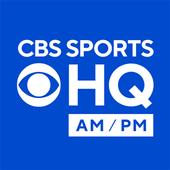
CBS Sports HQ Newsletter
Your Ultimate Guide to Every Day in Sports
We bring sports news that matters to your inbox, to help you stay informed and get a winning edge.
Thanks for signing up!
Keep an eye on your inbox.
Sorry!
There was an error processing your subscription.
There aren't easy answers here. It's going to take experimentation throughout the season, and that's what Friday's Pacers game ultimately was. The Lakers found something that worked in large part because they put aside their preconceived notions about what their team should be and emphasized the players they actually have. There are still kinks to work out on both sides of the ball, but the only way to maximize all of the ball-handling and shooting on this team is to actually use it. After resisting throughout the early portion of the season, the Lakers finally embraced their roster on Wednesday and were rewarded with a victory.










